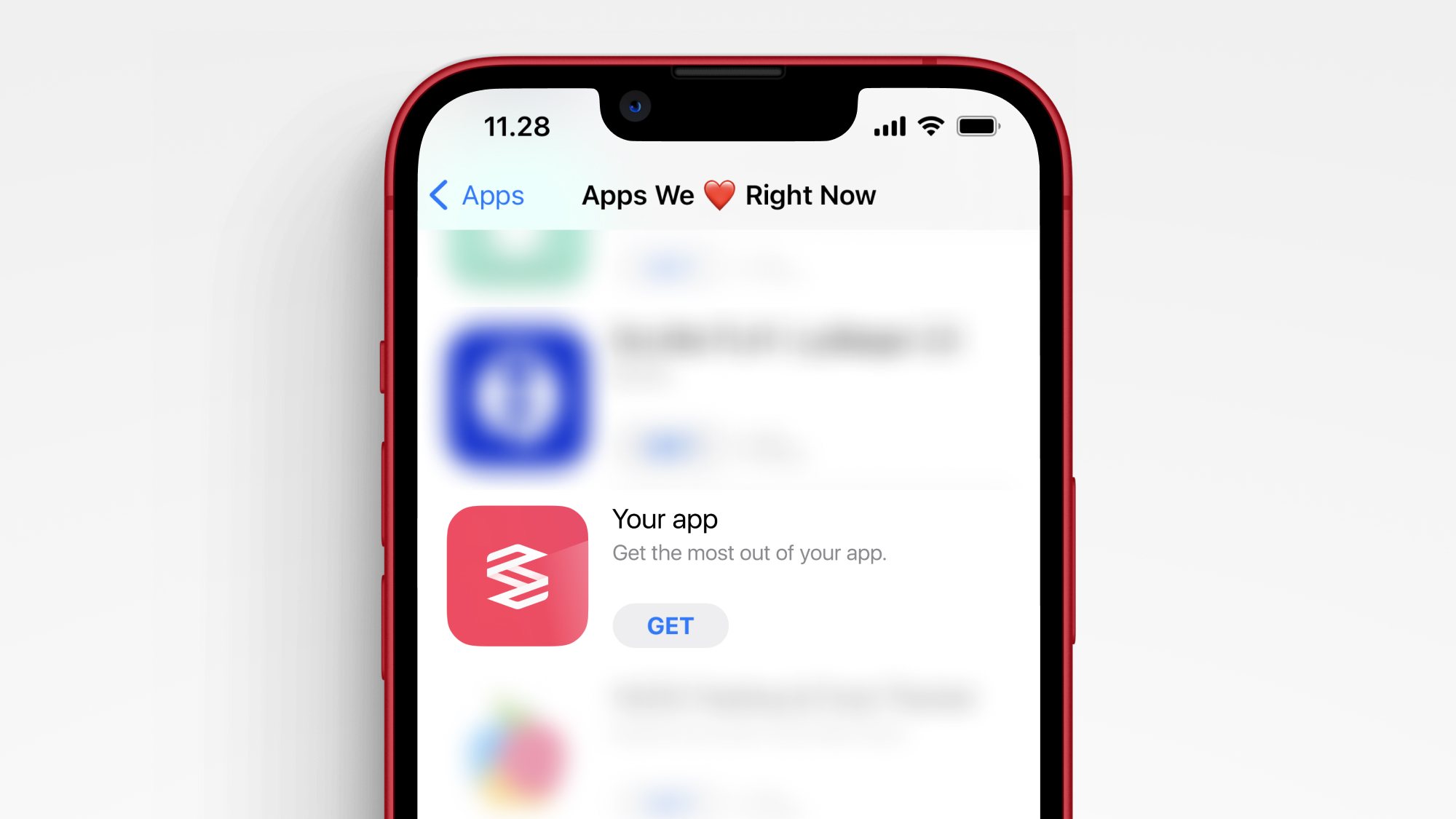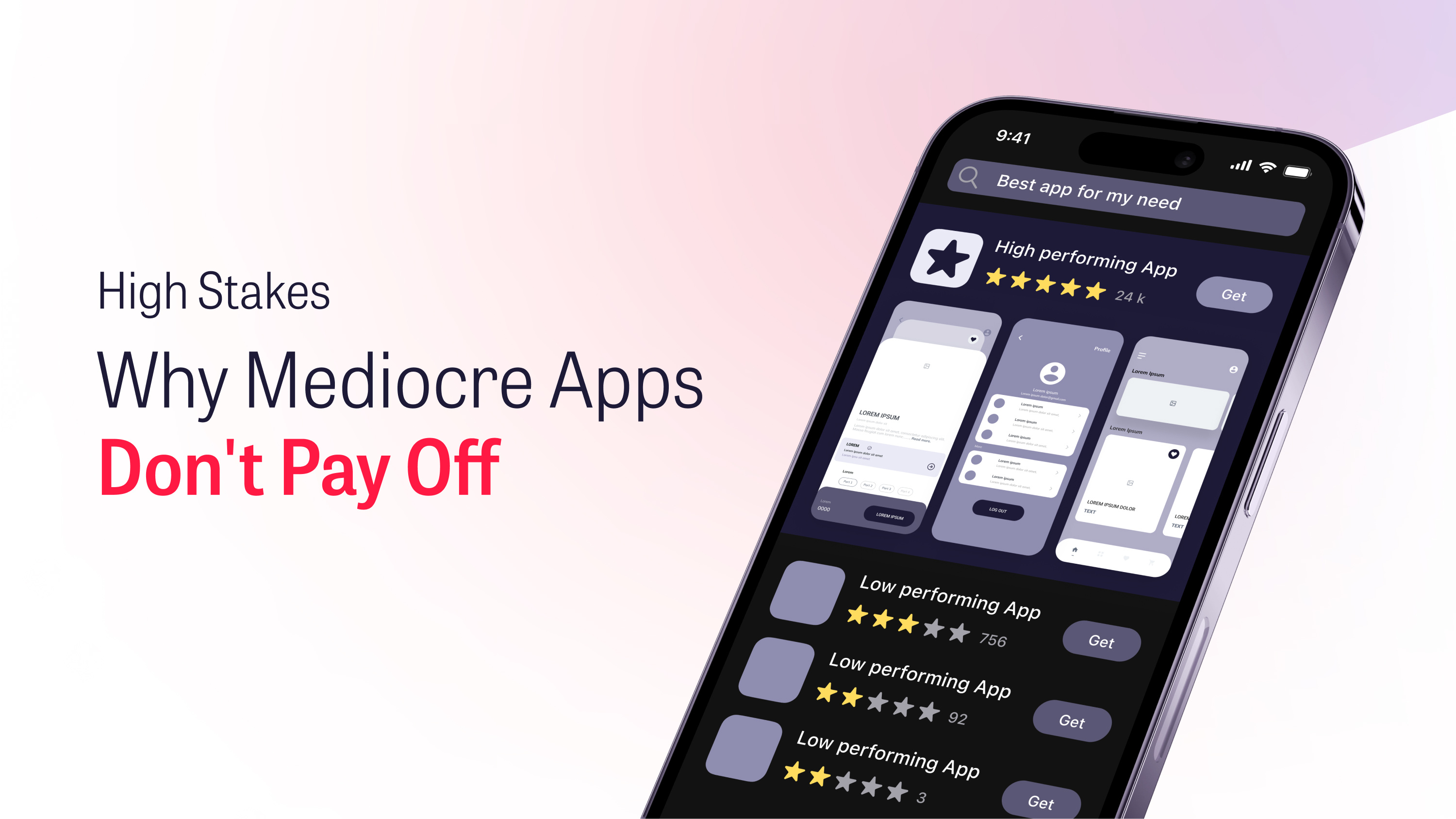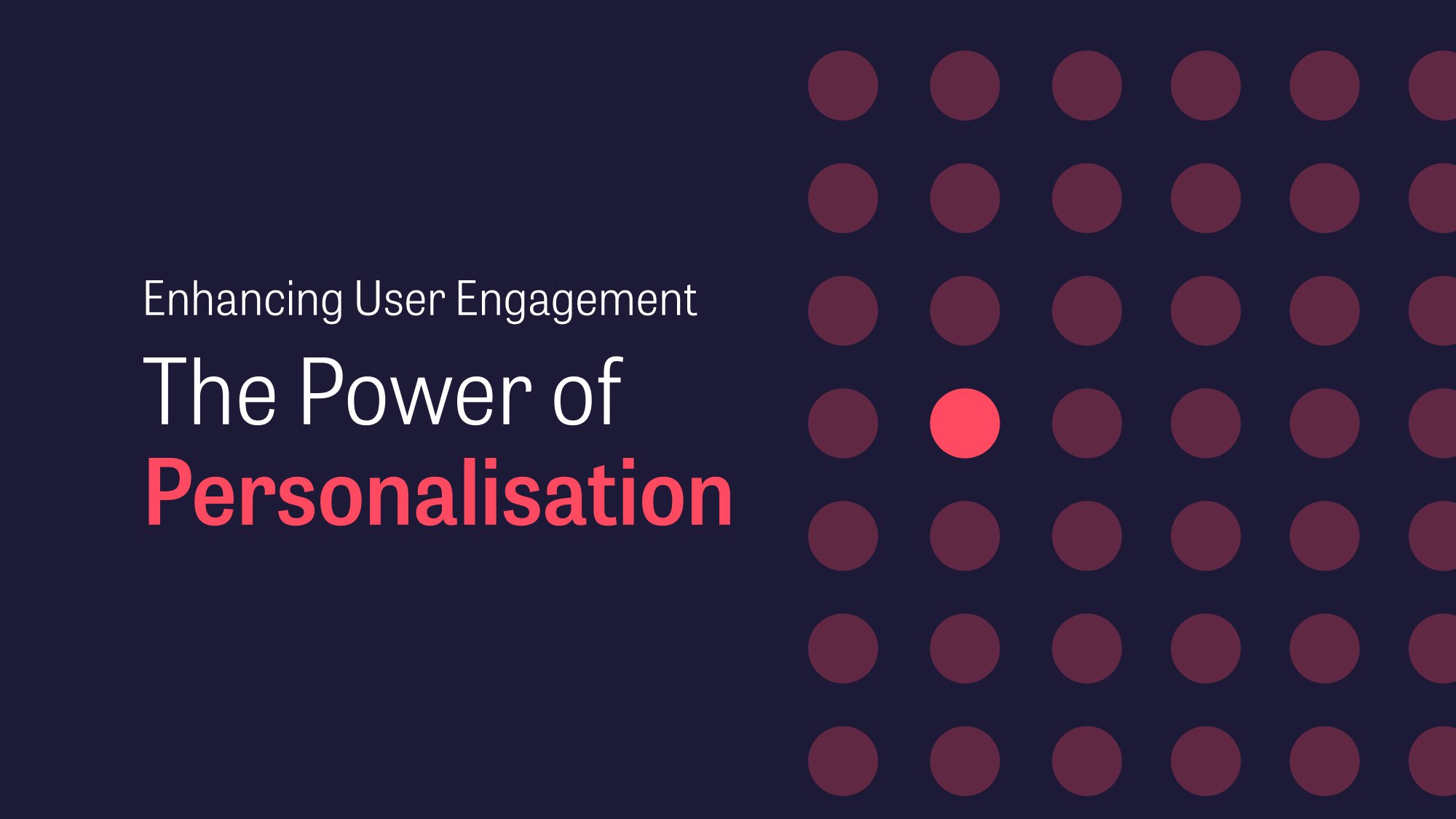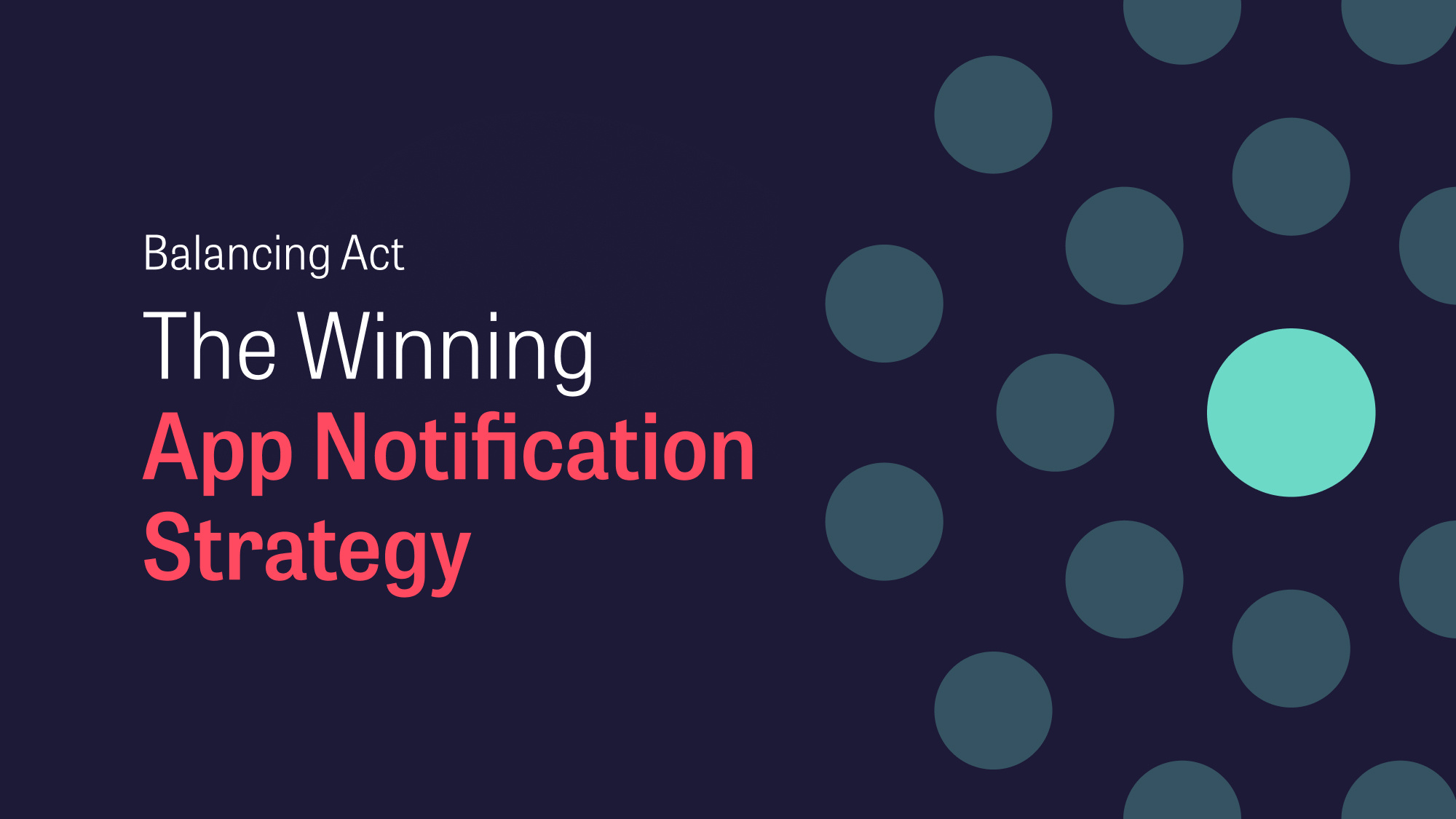
As businesses compete for customer attention, it's crucial to offer a platform that allows them to browse, learn, and interact with your brand 24/7. This is where a well-designed mobile app comes in.
In today's world, more people than ever are using their phones to connect with businesses. That's why having an effective mobile app is a must. But, let's be real – creating an app that truly engages your customers is no small feat.
A great mobile app should offer users the ability to interact with key aspects of your company, whether that's transactions, learning, or something else, all with a smooth user interface that seems effortless. In addition, it should secure users' personal information, giving them peace of mind.
Finally, imagine having a mobile app that was so easy to use that your customers kept coming back for more. This is precisely what you can achieve by developing an app that caters to your customers' needs and ensures a seamless experience time and time again.
Mobile apps possess exceptional power due to an entirely personalised experience through the user's login data. Unlike a website, an app can feel like an intimate friend, as it has exclusive access to your personal data while ensuring your privacy. This partnership is based on the app's ability to understand your behaviour and preferences, creating tailored solutions that are exclusive to your needs.
1. Retain Users By Delivering Consistent Value
Keeping users engaged and coming back for more is the key to a successful app. There are a variety of ways to achieve this goal – some apps do it by providing fresh, exciting content on a regular basis, while others incentivise users to return through rewards or special features. However, some apps don't need to rely on incentives – instead, they offer genuinely useful services that keep users coming back time and time again.
No matter how you choose to do it, the key to retaining users is by delivering consistent value. By offering unique features, a seamless user experience, or a service that users can't find elsewhere, you'll be giving customers a reason to keep coming back and stay engaged with your app over time. It's all about delivering value that keeps users coming back for more.
However, delivering value doesn't end once the app is developed and launched. It's critical to continuously innovate and improve the app by regularly updating it with new features, improvements, and bug fixes. This helps keep the app relevant and valuable to users, encouraging them to keep using it.
Also, notifications are a critical component of a successful mobile app engagement strategy. When implemented correctly, they have the ability to improve user retention, activate dormant users, and drive mobile app growth.
According to a recent survey, push notifications boost app engagement by up to 88%. This high level of engagement can be attributed to the immediacy and personalisation that notifications offer. But what exactly are push notifications? Push notifications are messages sent by mobile applications directly to users' mobile devices. They can appear on the device's lock screen, notification center, or app icon badge, providing timely information or reminders to users. Notifications can be triggered by a variety of events, including new content, promotions or discounts, and reminders of incomplete in-app actions.
Notifications offer a powerful way to drive user engagement due to their ability to be highly targeted and personalised. This can improve the user experience while simultaneously increasing engagement levels.
2. Understand Your Niche and Deliver Value to Users
The key to success lies in understanding your niche and providing value there. Rather than trying to be everything to everyone, look at what customers truly need and enjoy - then focus on delivering that. Trying out too many new concepts or following competitors might just lead to wasted effort, while specialising could give your app an edge.
It’s also helpful to get inside the head of your user persona – consider the age, tech-savviness, and phone usage of your users, along with their earning potential and existing apps on their phones. With this knowledge, you'll better understand how to onboard them and what kind of features will keep them coming back for more. Plus, by understanding the competition you'll be able to position yourself accordingly.
At the end of the day, successful apps are all about delivering value and solving problems for their users. Think about differentiating factors like what type of content is offered; whether incentives are used; or if a genuinely useful service can be provided. These are all great ways to give users a reason to log back in overtime and form an emotional connection with your app.
3. Master the Art of UX/UI Design to Create a Winning Mobile App
Creating a successful mobile app isn't just about aesthetics. User experience (UX) and user interface (UI) design play a crucial role in the success of any app. When it comes to creating a winning app, there's so much more to UX/UI design than an eye-catching look and feel. In fact, 80% of all customers claim that the customer experience a company delivers is equally important as the product or service itself.
Maximising User Engagement and Security Through a Streamlined Onboarding Process
One critical area to focus on when it comes to UX/UI design is your onboarding flow. Think of it like this: It's your first impression with your customers. If the onboarding process is too complicated, new users might abandon your app before even experiencing its full range of features. That's why it's crucial to make the onboarding flow as seamless and straightforward as possible.
It's also important to remember that, in the digital age, privacy concerns are at the forefront of customers' minds. So, make sure to keep data safe and encourage good digital hygiene. This means minimising the amount of information you request during onboarding, reminding users to set strong passwords, enable two-factor authentication, and implement robust privacy protocols. If there’s a lot of information that should be collected during the onboarding, you can use gamification to make the process more fun and engaging for the customer. A strong gamification design around key features also ensures people try out the full range of app features and increases loyalty.
By prioritising the onboarding process and user privacy, you can ensure your app has the best possible chance of success.
Prioritising User Experience and Responsive Design in a Mobile App
Are you ready to make your mobile app a smashing success? If so, a major step is to prioritise the user experience. When your customers open your app, they should be greeted with a beautiful interface that's easy to navigate and quick to respond. Why it’s important? Because by focusing on the user experience, your customers will continue coming back, engage more with the features and do more monthly transactions.
Why is a user-friendly interface so crucial? Well, simply put, customers appreciate simplicity. They want an app that's intuitive, where it's easy to determine which buttons to tap and what steps to take. By creating an app that's straightforward and uncomplicated, you'll keep users engaged and coming back for more.
Also, as the number of smartphone users worldwide continues to skyrocket – currently standing at 3.8 billion – it's essential to prioritise the scalability of your app. People are using screens of all sizes, from tablets to small phone screens, and your app needs to adapt accordingly.
To make your app truly stand out, consider prioritising user experience and building the app native to the operating system. The app should always be tailored to the device which ensures it works perfectly across all device sizes.
4. Captivating UI that Outshines Your Competitors
If you’re looking to create a stunning app that stands out from the crowd, ensure it has an attractive design that is both fresh and familiar, and supports your business goals through the choice of strategic elements. Use the language of the operating system you're building for and don't try to reinvent the wheel. Pay attention to detail, such as adapting your app for different screen sizes.
And remember, simplicity is key. A confusing layout and unclear instructions have a short lifespan – customers will become frustrated quickly if they can’t find what they need and leave in search of an alternate solution. Keep screens uncluttered with obvious directions, so customers can access their information quickly and easily without having to think twice. Make sure to extend your brand through visuals, colours, icons, and style choices – this will help create an emotional connection with your app over time. The app should feel like a native and unique experience with your brand.
The importance of a well-designed UI cannot be overstated – this applies to both the aesthetics and the functionality of the app. Even if your app delivers tons of value to users, if the interface is clunky or hard to understand, they'll quickly lose interest. On the other hand, a visually appealing and intuitive UI helps keep users engaged and excited about your app. By smart design choices, you can also prioritise strategic elements on your app in order to achieve your business goals better.
More and more internet traffic is on mobile and apps, so designing on mobile should be the leading choice of today. This means simplifying the design and focusing on what matters most. By removing non-essential app features, you'll achieve a less cluttered, more streamlined look that's easier to navigate.
To create a cohesive user experience, it's also crucial to establish design consistency across platforms and phone sizes. Consistent typography, buttons, icons, and branding components help users navigate the app more easily and provide a more unified experience. By creating a structured app that highlights the most critical content, you'll foster a better information hierarchy, facilitate user flow, and improve the overall user experience.
In a world where mobile apps often have a high churn rate, the importance of a fantastic UI cannot be overstated. By prioritising a well-designed interface, your app will stand out in a sea of competitors and keep users engaged and coming back for more.
5. Make It Personal: Leverage AI Technologies and Machine Learning to Provide Tailored User Experiences
In the highly competitive world of mobile applications, personalisation is one of the key differentiators that can set your app apart from the rest. Today's consumers increasingly demand personalised experiences that cater to their individual preferences and interests, and leveraging the power of AI and machine learning technologies can help you deliver that experience in a way that truly resonates with your users.
To create a truly personalised mobile application, it's essential to understand the unique needs and interests of each user, and to tailor your app's user experience to those preferences. This level of personalisation can lead to increased engagement, heightened levels of loyalty, and ultimately, more revenue for your business.
The use of AI and machine learning are pivotal when it comes to achieving this level of personalisation. By leveraging advanced algorithms and data analytics tools, you can gain deep insights into each user's behaviour and preferences, allowing you to create a user experience that is truly tailored to their needs. This personalised approach not only ensures that the user feels valued, but also leads to a deeper emotional connection with the app and ultimately greater levels of engagement.
To collect the data needed for personalisation, there are two main strategies that can be employed – passive and active data collection. Passively, you can track user behaviour through their interactions with the app, analysing things like swipe patterns and time spent on different pages. Actively, you can collect data by prompting users to fill out surveys or questionnaires.
With access to this rich trove of data, you'll be better equipped to deliver a truly personalised experience to each and every user. From customising content for repeat visitors to targeting new users with personalised welcome messages and relevant offers, the possibilities for personalisation are endless.
Overall, it's clear that personalisation is not just a “nice-to-have” feature for mobile applications – it's an essential ingredient for success in today's digital landscape. By leveraging the latest AI and machine learning technologies, your app can stand out from the crowd and build deep, meaningful relationships with your users that will drive engagement, loyalty, and revenue for years to come.
Conclusion
Ultimately, success in the mobile app space requires understanding your niche and delivering value to users. You must also leverage AI and machine learning technologies to provide tailored user experiences that make customers feel valued as individuals. By focusing on personalisation, you can create an unforgettable experience for each visitor and build relationships with them over time. When done right, this approach will help drive more engagement - leading to increased loyalty and revenue for your business. With these tips in mind, you’re well-equipped to start creating engaging mobile apps that stand out from the competition.






